7 Versatile Spaces: Harmonizing Style and Utility. In today’s world, our homes have become not only the central hub of our lives but also the spaces where we engage in various activities.
7 Versatile Spaces. From working and exercising at home to optimizing limited space by transforming areas like kitchen islands into formal dining and entertaining spaces, or creating a playroom within a nursery, we are constantly seeking ways to do more with less. Given these evolving needs, the demand for multi-purpose rooms has never been greater.
Den and Guest Room Combo: A Practical and Versatile Space
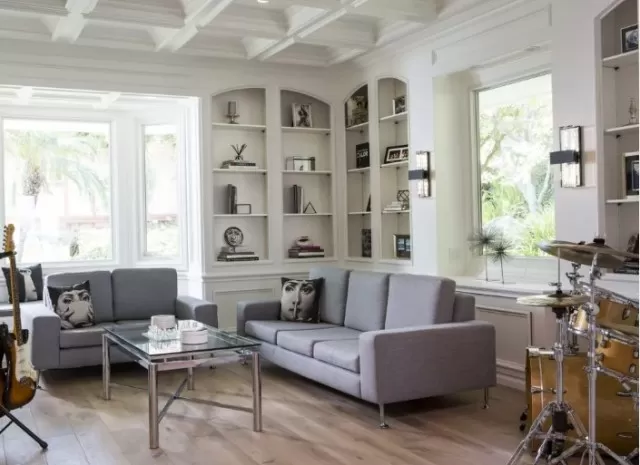
Transforming your den or office into a guest room is a simple and cost-effective solution, according to interior designer Reginald Dunlap.
7 Versatile Spaces. This versatile space can serve multiple purposes: during the day, it can function as your workspace for Zoom calls, while allowing your children to play with their toys, which can be neatly stored on bookshelves or built-in storage units. And when an overnight guest arrives, you can effortlessly convert the area into a comfortable sleeping space.
Consider investing in a sleeper sofa or a hidden Murphy bed that can be easily pulled out when needed. This den and guest room combination provides practicality and convenience, making the most of limited space while accommodating both work and hospitality needs.
Dual-Purpose Room: Office and Home Gym Combo
If you’re someone who enjoys working out at home and also needs a dedicated space for remote work, consider transforming a room into a versatile hub that serves both purposes.
Catherine Hooper, the owner and founder of iSPY Home Design, suggests creating an office and home gym combination.
Start by prioritizing appropriate lighting.
Since vigorous movements during workouts can accidentally knock over standing lamps, opt for plug-in wall sconces for a safer alternative. Maximize space efficiency by adding a wall-mounted bookshelf where you can store gym accessories on the lower shelves and business books on the higher ones.
Choose a desk with built-in storage, such as a filing cabinet or drawers, to keep your workspace organized. Utilize floating shelves above the desk to maintain a clutter-free environment.
By utilizing wall space effectively, you can free up more room for workout furniture and gear, creating a harmonious blend of functionality and convenience in your dual-purpose room.
Kitchen Island and Dining Room Fusion: Maximizing Space and Functionality
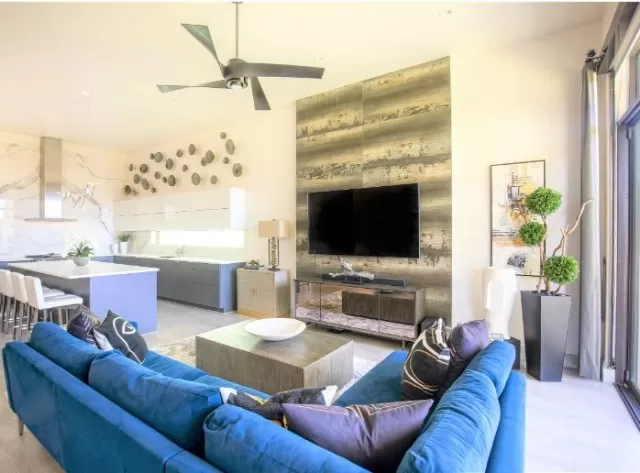
Reginald Dunlap highlights a growing trend in condo or apartment renovations where the kitchen island serves as a versatile Dining Table.
Recognizing that the kitchen remains the heart of any home, regardless of its size or type, homeowners prioritize storage solutions over a separate dining area. If this concept intrigues you, a custom design approach is ideal.
Create an island with an expanding countertop and ensure you have extra stools on hand to accommodate guests. Dunlap explains, “We’ve developed a sliding countertop that effectively doubles the size of the island.
Although it requires more investment and engineering, it maximizes space beautifully. ” This innovative solution allows for seamless transition between kitchen activities and dining, providing a practical and efficient use of space without compromising on style or functionality.
Entryway Transformation: Utilizing Dead Space for Functional Storage
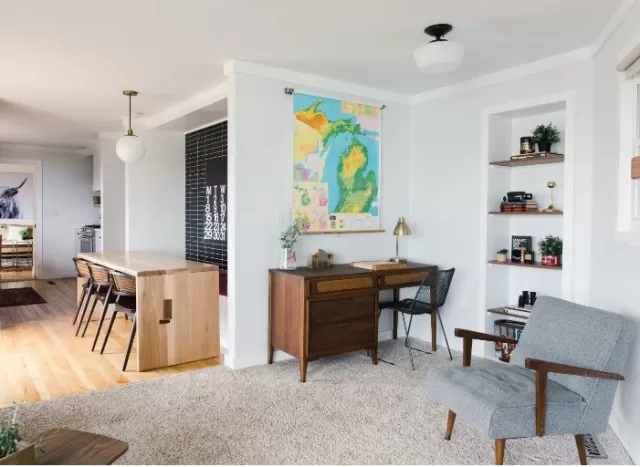
Victoria Benatar, the co-founder of EXD-LAB Architecture PLLC, suggests taking a closer look at your home or apartment to identify any unused or under-utilized areas, particularly in the entryway.
If you have an oversized vestibule currently occupied by a rug, a random side table, and a plant, it’s time to rethink its potential. Rather than letting this space go to waste, Benatar recommends transforming it into a functional and practical storage area.
In an oversized entryway, consider adding hooks for coats, incorporating a console with storage compartments, or even creating a craft station for the kids.
The possibilities for storage solutions are endless, allowing you to customize the space according to your needs and preferences. By repurposing this dead space, you not only enhance the functionality of your entryway but also optimize storage capacity, keeping your home organized and clutter-free.
Hallway Conversion: Maximizing Space for an Office Setup
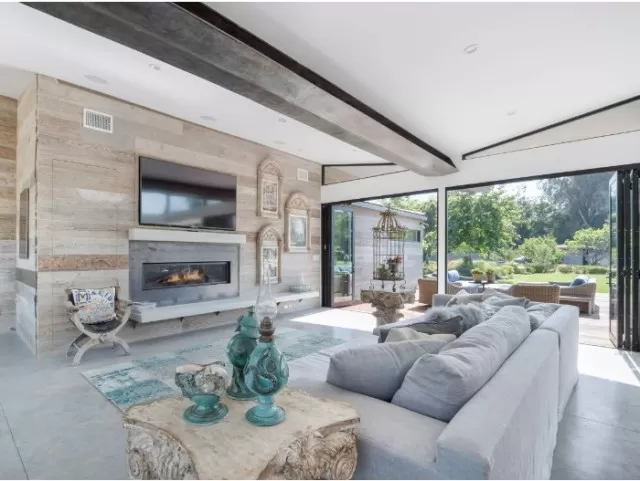
In larger, older homes or apartments, long hallways often remain underutilized spaces.
Reginald Dunlap suggests tapping into the potential of these tight areas. While some may use hallways to display artwork, the walls have even more possibilities.
You can transform this abundance of wall space into functional storage or create a compact “office” setup.
Start by incorporating floor-to-ceiling cabinets along the hallway walls.
Then, place floating desks between the units to carve out individual workspaces. This setup proves beneficial for remote workers or creating separate study areas for children.
Enhance each desk area with floating shelves and task lighting to optimize functionality. By utilizing this often-neglected space, you not only maximize storage capacity but also establish dedicated workstations that blend seamlessly into the hallway.
This hallway conversion enables efficient use of space and provides a productive environment for work or study.
Dual-Purpose Delight: Stylish Living Room and Playroom Fusion
Finding the balance between maintaining a stylish living room and creating a functional play space for your kids can be a challenge.
However, with storage-savvy furniture, you can achieve both without compromising on style, according to Catherine Hooper.
Instead of sacrificing your living room’s entertainment center, consider swapping out a clunky media console for a versatile sideboard that offers storage and entertainment options.
This piece can conveniently hold extra Legos and even your holiday china. Look for furniture that cleverly hides your kids’ belongings in plain sight.
Storage ottomans serve as excellent solutions, providing a place to store toys while also offering additional seating for guests. Strategically place them like armchairs or on either side of the sideboard.
If you want to maintain your existing sofa, consider utilizing an empty corner with a modular banquette that features hidden storage.
This way, you can create a designated play area for your kids without encroaching on the rest of the room. Open cubbies with storage baskets are another fantastic option for organizing toys and giving your children a dedicated play space within the living room.
By blending style and functionality, you can seamlessly merge your living room and playroom, resulting in a delightful and practical space for both adults and children to enjoy.
Montessori-Inspired Playroom and Nursery: Creating a Multi-functional Space
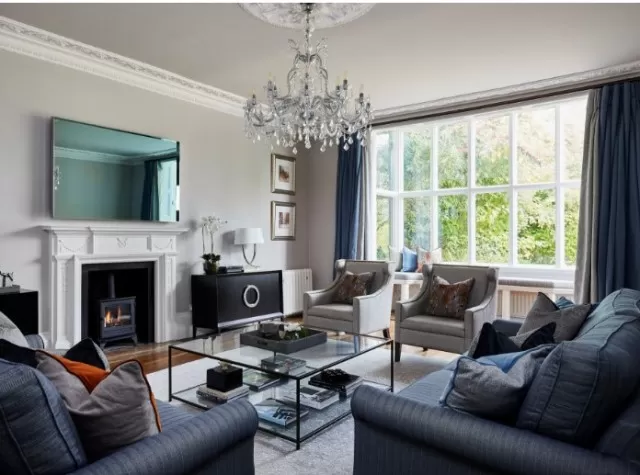
When space is limited, combining a playroom and nursery becomes a practical solution, even though sleep experts may advise against it.
To optimize the functionality of the room, Victoria Benatar suggests adopting the Montessori method. This approach emphasizes creating distinct areas that cater to a child’s developmental needs, including sleeping, reading, and crafting zones.
By carefully sectioning off the room, you can create dedicated spaces for different activities.
Designate a cozy sleeping area with a comfortable crib or bed, ensuring a tranquil environment for naptime and bedtime. Set up a reading nook with a child-sized bookshelf, soft cushions, and a Cozy Chair or floor seating.
This encourages the love of reading and provides a quiet retreat for storytelling moments. Additionally, incorporate a crafting corner equipped with child-friendly art supplies, a small table, and storage for art materials.
Embracing the Montessori method allows you to maximize the functionality of the space while providing distinct areas for different activities.
This thoughtful approach creates a harmonious blend of playroom and nursery, accommodating your child’s needs and promoting a stimulating and nurturing environment.
*The information is for reference only.